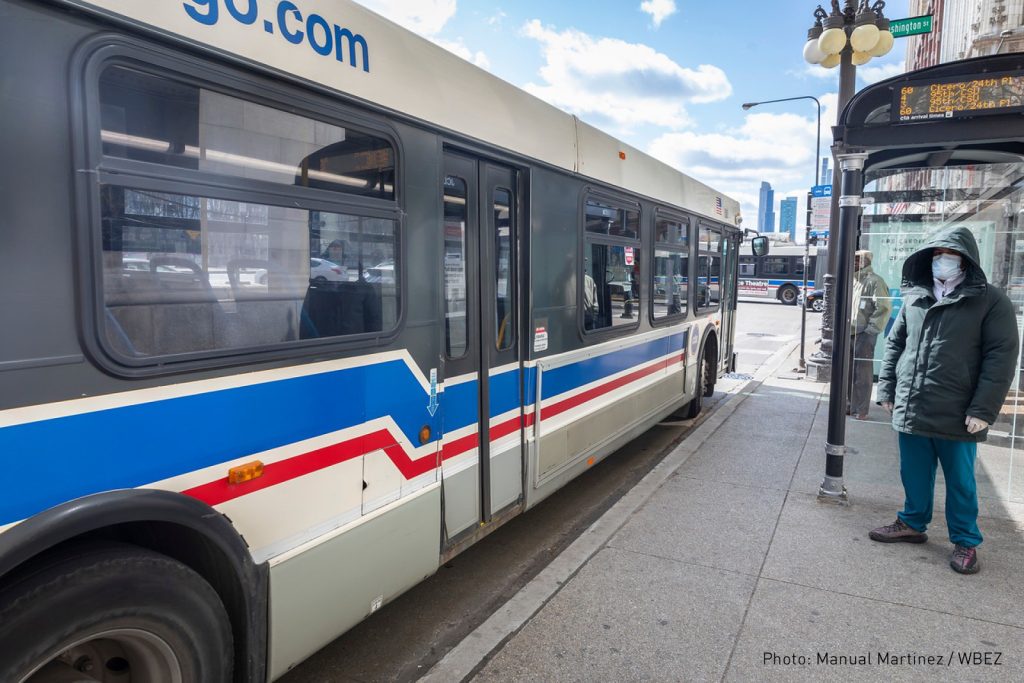While the coronavirus has taken an enormous toll on transit ridership across the region and country, there are of hundreds of thousands of people locally who continue to rely on public transit every day to reach jobs and make other essential trips.
CTA, Pace, and Metra together are still serving roughly 340,000 people per weekday during the stay-at-home order. This is more than or equivalent to ridership levels in the metro areas of Atlanta, Denver, Houston, Miami, and Minneapolis in normal times.
Our regional transit system is vital to our region — now more than ever.
Transit gets essential workers to work so all of us have access to food, healthcare, and other necessities. It ensures that those unable to drive or without access to a car are able to get to their medical appointments, the pharmacy, the grocery store, and other essential destinations.
Keeping our transit system running frequently and safely for essential trips and essential workers is an economic issue, a health issue, and a racial equity issue.
To help keep transit riders and transit drivers safe, here are some safety tips that we developed with the Cook County Department of Public Health.
Tips for transit riders:
- Per Governor Pritzker’s executive order, wear a face covering such as a mask, scarf, or bandana while taking transit.
- Keep your distance:
- At bus stops and train stations, keep a minimum of six feet between you and others.
- Choose a seat at least six feet from others, if possible. Do not sit in a vacant seat next to someone else. Ideally, leave two to three rows of seats open between you and other riders.
- Avoid crowded buses or train cars. This may mean giving yourself more time to wait for a less crowded bus or train to arrive. CTA, for example, is limiting bus ridership to 15 passengers per standard 40-foot bus and 22 passengers per 60-foot articulated bus.
- Check your bus or train schedule before you travel. Because of lower ridership, Pace and Metra have reduced service along some of their routes.
- Use the rear doors to enter and exit all CTA and Pace buses with rear doors. Where rear-door boarding is possible, you may need to open the door manually from outside the bus. If you use a mobility device or require the use of the ramp, use the front door.
- Keep your driver or conductor healthy — only interact with them when absolutely necessary.
- Follow new payment protocols:
- On Pace, fare collection has been waived on buses and paratransit.
- On Metra, use the Ventra App to purchase your ticket if you have a smart phone.
- On CTA buses, farecard readers are being moved to the rear doors. At this time, fare payment will not be enforced on buses without rear-door farecard readers.
- Limit non-essential touching of handrails, straps, seat backs, and other surfaces.
- Wash your hands or use hand sanitizer before and after using public transit. Remember not to touch your face.
Active Trans worked with subject matter experts from Cook County Department of Public Health and gathered feedback from local transit agencies to create a shareable infographic (download available in English and Spanish) to highlight some of these best practices.
Please share this infographic with your networks!
The infographic is available in both English and Spanish.
Join us in the fight for the future of transit! With lower ridership numbers, decreased sales tax and gas tax revenue, transit funding is facing a crisis. The federal emergency funding that has been awarded so far is a stopgap measure, but we need to rethink the ways we fund transit. Stay tuned for ways to get involved or email [email protected] with any ideas, questions, or concerns.
For additional COVID-19 related guidelines, news, and potential schedule changes, visit your transit operator’s website:
For more shareable infographics, see our tips on safe walking and biking during COVID-19.
This blog post was co-authored by Julia Gerasimenko and Maggie Melin. Anne Evans designed the infographic.
Photo courtesy of WBEZ.


